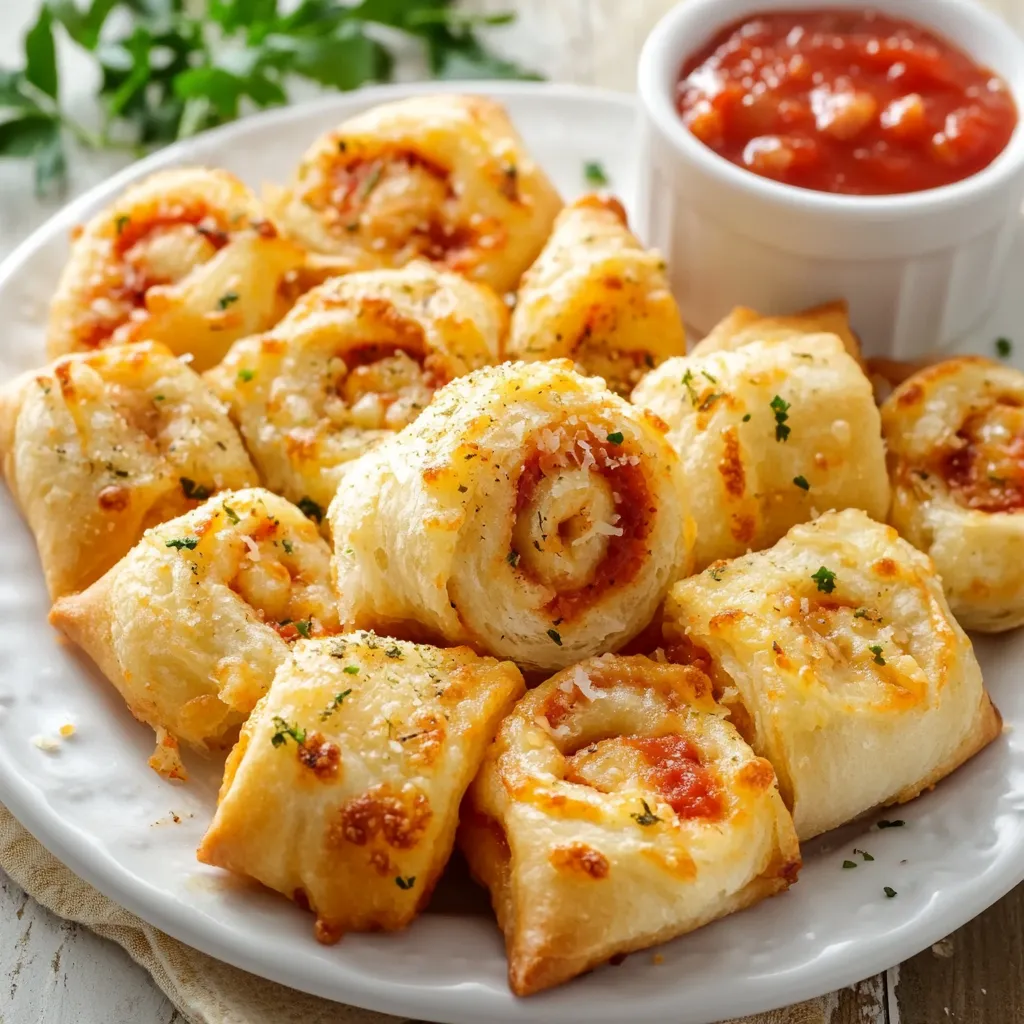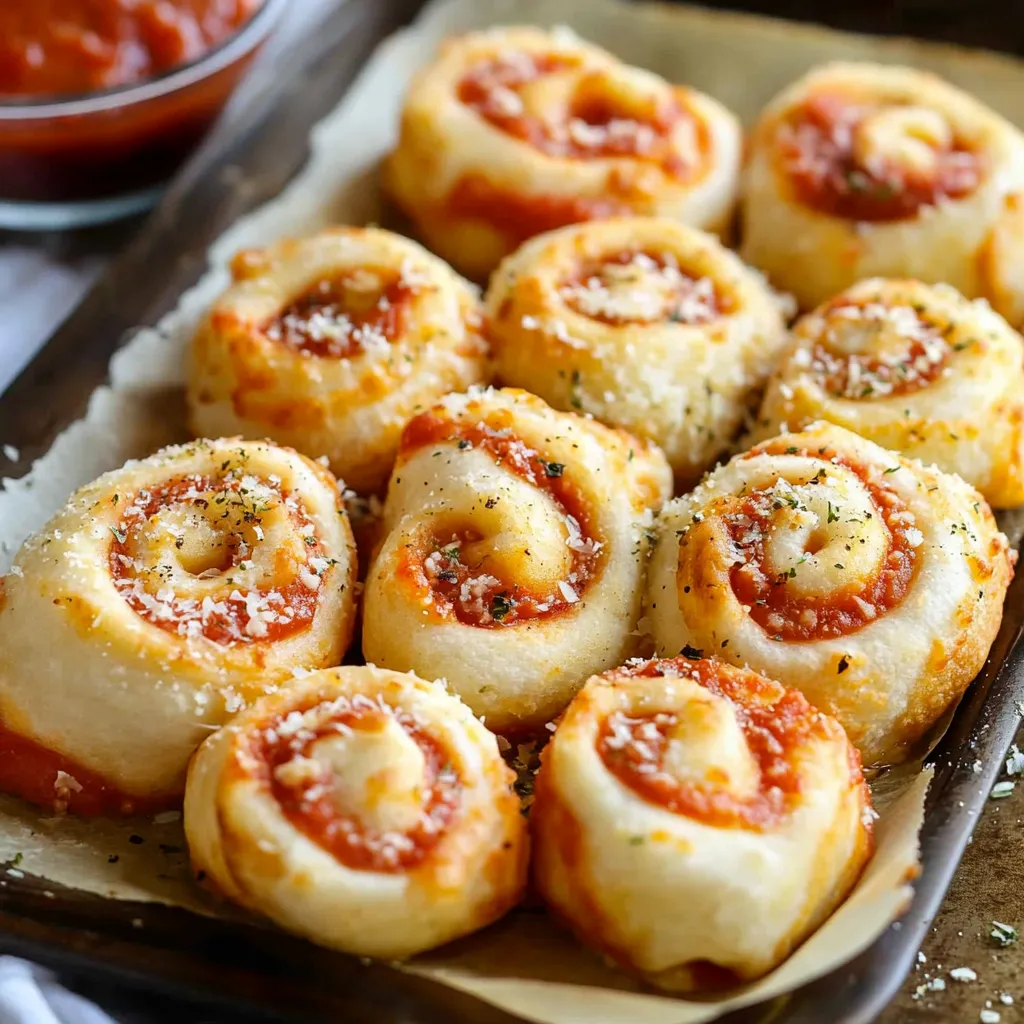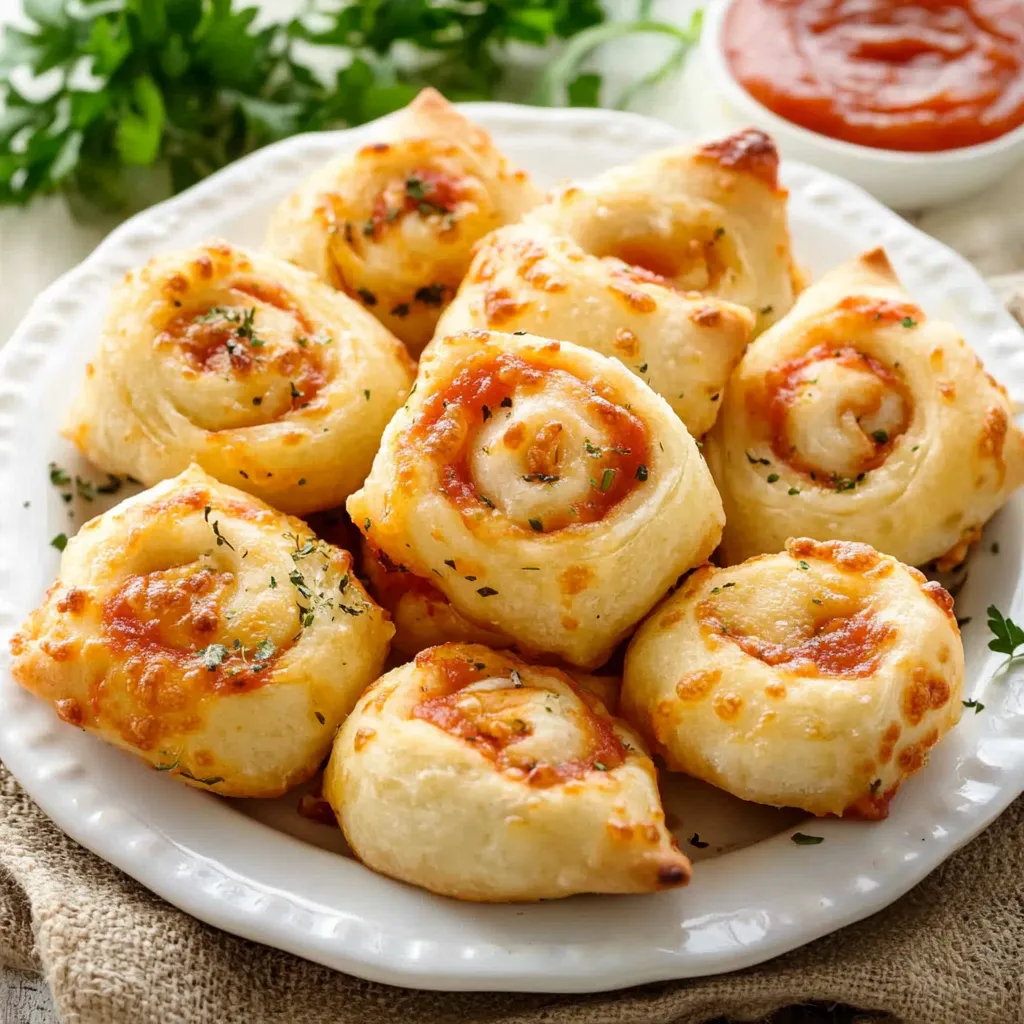 Pin it
Pin it
Nothing brings more joy to my kitchen than the aroma of freshly baked pizza rolls, filled with melted mozzarella and pepperoni, then brushed with golden garlic butter. These homemade pizza rolls transform classic pizza flavors into convenient, hand-held bites that never fail to bring smiles around my dinner table. After years of experimenting with different pizza variations, this recipe has become my go-to choice for both casual family dinners and festive gatherings.
Last weekend, I made these rolls for my neighbor's birthday gathering. The moment I pulled them from the oven, their irresistible aroma filled the house, and they disappeared within minutes. Even the pickiest eaters couldn't resist coming back for seconds.
Essential Pizza Roll Ingredients
- Pizza Dough: Forms the foundation of these rolls, providing a soft, chewy texture that encases all the delicious fillings. Choose fresh dough at room temperature for easiest handling
- Whole Milk Mozzarella: Provides that classic stretchy cheese pull and rich flavor. Always grate your own for the best melting properties
- Premium Pepperoni: Select thinly sliced, high-quality pepperoni for optimal flavor distribution throughout each roll
- Fresh Garlic Butter: Creates an aromatic, golden crust that adds depth to every bite
- Italian Seasoning: Enhances the authentic pizza flavor profile with a blend of classic herbs
Creating Perfect Pizza Rolls
- Prepare The Dough:
- Roll out fresh pizza dough into a large rectangle on a lightly floured surface, ensuring even thickness throughout. Let it rest for 5 minutes if it springs back too much during rolling.
- Add The Fillings:
- Layer freshly grated mozzarella evenly across the dough surface, leaving a one-inch border. Distribute pepperoni slices in an even pattern, slightly overlapping to ensure every bite contains the perfect amount of filling.
- Roll With Care:
- Starting from the long edge, carefully roll the dough into a tight cylinder, keeping tension consistent throughout. Seal the edges firmly by pinching the dough together, preventing any cheese from leaking during baking.
- Slice And Arrange:
- Using a sharp knife, cut the roll into even portions, placing each piece on a prepared baking sheet with enough space between them for expansion. Brush generously with garlic butter mixture.
Growing up in my Italian grandmother's kitchen, I learned that the secret to exceptional pizza rolls lies in the quality of cheese. She always insisted on whole milk mozzarella, freshly grated just before use. The difference in melting quality and flavor is remarkable, creating that perfect cheese pull that makes these rolls irresistible.

Perfect Pizza Roll Texture
The key to achieving the ideal texture lies in proper dough handling. When rolling the dough, maintain gentle but firm pressure to create an even thickness. This ensures uniform baking and prevents any areas from becoming too thin or thick. I've found that letting the dough come to room temperature before working with it makes a significant difference in its elasticity and overall handling.
Making Ahead Options
These versatile rolls adapt beautifully to busy schedules. Prepare them up to the point of baking, then cover and refrigerate overnight. The next day, simply let them come to room temperature for 30 minutes before baking. The convenience factor makes them perfect for both impromptu gatherings and planned celebrations. I often prepare a double batch, freezing half for future use.
Pair With These Sides
Consider serving these pizza rolls alongside a crisp Caesar salad dressed with homemade garlic croutons. A bowl of warm marinara sauce for dipping adds an extra layer of comfort to each bite. During summer months, I love pairing them with fresh cucumber and tomato salad drizzled with balsamic glaze.
Customize Your Rolls
Transform these rolls to match your taste preferences. Try substituting Italian sausage for pepperoni, adding sautéed mushrooms, or incorporating fresh basil leaves. For a vegetarian version, replace meat with roasted vegetables and use a blend of fontina and mozzarella cheese. The possibilities are endless.
Keep Them Fresh
Store leftover rolls in an airtight container in the refrigerator for up to three days. To reheat, wrap them in foil and warm in a 350°F oven for 10 minutes, or until heated through. Avoid microwaving if possible, as it can make the texture chewy.

After years of making these pizza rolls, they've become more than just a recipe in my collection. They represent comfort, family gatherings, and the joy of sharing good food with loved ones. Whether served as an after-school snack or the star of a casual dinner party, these rolls never fail to bring people together around the table, creating moments of shared happiness that make cooking such a rewarding experience.
Recipe FAQs
- → Can I make these pizza rolls ahead of time?
- Yes, you can prepare the rolls and refrigerate them unbaked for up to 24 hours. Just brush with the garlic butter right before baking.
- → What other fillings can I use in these pizza rolls?
- Try Italian sausage, ham, mushrooms, bell peppers, or olives. Just make sure not to overfill them so they roll properly.
- → How do I store leftover pizza rolls?
- Store cooled rolls in an airtight container in the refrigerator for up to 3 days. Reheat in the oven or microwave until warm.
- → Can I freeze these pizza rolls?
- Yes, freeze baked and cooled rolls in a freezer bag for up to 2 months. Thaw overnight and reheat in the oven until warm.
- → Why did my cheese leak out while baking?
- Make sure to roll the dough tightly and pinch the seams well. Don't overfill with cheese, and place the rolls seam-side down on the baking sheet.
